05 May 2014
Prevent Prescription Drug Abuse In Your Teen
Prescription drug abuse is a major problem across the U.S. and for people of all age groups. Teens, however, are particularly vulnerable and if you have children you should be aware of the risks and dangers. There are two main kinds of drugs being abused by young people: narcotic painkillers and stimulants. The former are used to get a high, but the latter are often abused as a study aid. Stimulants, like those used to treat ADHD, produce wakefulness and many teens use them to stay up at night for studying.
The statistics regarding teen abuse of prescription drugs are alarming. Since 2008, abuse has risen by 33 percent. The statistics also show that most young people do not believe there are any risks in abusing prescriptions and that parents are largely ignorant when it comes to their children’s abuse of these drugs as well as the risks. Learn how to keep your teen safe.
Where Do Teens Get Prescription Drugs?
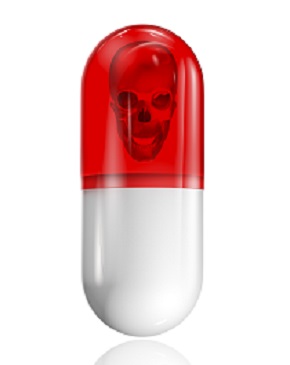 The first line of defense against abuse of prescriptions by your teen is to limit her access to them. So where are teens getting these medications? The most common location for teens to find prescriptions is the medicine cabinet. Teens get drugs right from their own homes. If they can’t find them there, they turn to their friends’ medicine cabinets. Many people are prescribed narcotics and stimulants, so finding them in homes is not difficult.
The first line of defense against abuse of prescriptions by your teen is to limit her access to them. So where are teens getting these medications? The most common location for teens to find prescriptions is the medicine cabinet. Teens get drugs right from their own homes. If they can’t find them there, they turn to their friends’ medicine cabinets. Many people are prescribed narcotics and stimulants, so finding them in homes is not difficult.
If the drugs cannot be pilfered, your teen can most likely buy them. Buying and selling prescriptions in high schools are common. Your teen may also be able to purchase medications online. Illegal pharmacies will not hesitate to sell to a teen.
How Can I Limit My Teen’s Access To Prescriptions?
With prescription medications so prevalent in homes, at schools and online, you need to be especially vigilant to restrict your teen’s access. If you have prescriptions in your home, keep them in a locked cabinet. If your teen has been prescribed one of these commonly abused medications, keep it locked up and dose it out to her as directed by her doctor. A common source for stolen medications is expired pills that have been forgotten or thrown in the trash. Be aware of your unused drugs, keep track of them and dispose of them properly.
Unfortunately, limiting your teen’s access to drugs at home is where your control ends. You cannot control her access at school or at friends’ houses. What you can do, though, is educate your teen about the risks and dangers of drug abuse. First read up for your own knowledge and then talk to your children about how harmful prescriptions can be. Although they are legal and prescribed by doctors, these factors do not mean they are safe for everyone.
It is also important to educate your family and friends about prescriptions and keeping them under control. Your teen may be able to find drugs at a grandparent’s house or any other family member’s, but if everyone kept tighter control of their medications, fewer drugs would end up on the black market.
Finally, it’s important that you maintain a close and open relationship with your teen. The more time you spend interacting and talking, the more able you will be to detect when something is wrong or if she is showing signs of abusing drugs. This healthy relationship will also mean that your teen will be more likely to come to you with questions, concerns, and problems related to drugs and drug abuse.
Texting is quickly replacing phone calls. Now the Drug Enforcement Administration (DEA) has decided to turn the texting craze into the latest weapon in the DEA’s fight against prescription drug abuse.
The administration has developed a new initiative called TIP411 which launched in late February in the state of Georgia. Anyone in the public who observes suspicious behavior, especially those who work in pharmacies, can now text a message to TIP411 (847-411) along with the phrase PILLTIP to alert DEA agents.
The Need For Better Prescription Drug Monitoring
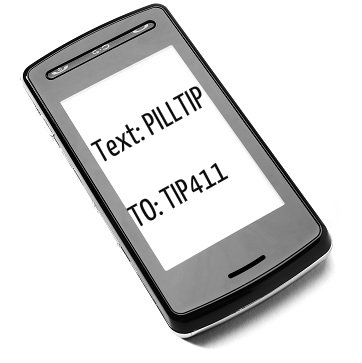 The U.S. Centers for Disease Control and Prevention (CDC) report that prescription drugs are largely behind a tripling of overdose rates in the nation since 1990. In 2008 more Americans died from taking prescription pain relievers (usually opioids) than those who died because of heroin or cocaine use. The glut of prescription drugs, and opioid pain relievers in particular, has almost certainly exacerbated the problem. According to the CDC since 1999 there has been a 300 percent rise in the sale of these potent drugs. Having so many pills out there among the public makes it all-too-easy for abuse to take hold.
The U.S. Centers for Disease Control and Prevention (CDC) report that prescription drugs are largely behind a tripling of overdose rates in the nation since 1990. In 2008 more Americans died from taking prescription pain relievers (usually opioids) than those who died because of heroin or cocaine use. The glut of prescription drugs, and opioid pain relievers in particular, has almost certainly exacerbated the problem. According to the CDC since 1999 there has been a 300 percent rise in the sale of these potent drugs. Having so many pills out there among the public makes it all-too-easy for abuse to take hold.
Most often, people obtain the drugs simply by raiding the family medicine shelf. Others buy them from friends who had a legitimate prescription from their doctor. The 2010 National Survey on Drug Use and Health found that just 2.3 percent of prescription drug abusers get their drugs from a stranger or the local drug dealer.
Eventually legitimate prescriptions run out and addicts must find another source. Sometimes prescriptions are forged, complete with fake callback numbers. Other times they doctor shop, which entails making appointments with several physicians and describing symptoms at each office in search of multiple prescriptions for painkillers. When all of these sources fail users frequently turn to heroin, which is in the same drug family as prescription opioids.
In conjunction with the launch of the text tip line, the DEA also mailed out printed materials to 1,200 Atlanta pharmacies. The materials tell pharmacy employees and pharmacists what signs to look for and how to use the tip line.
Pharmacists and employees are told to be aware of how often people refill their prescriptions. They are also warned to be suspicious when a person is holding a prescription for both a depressant and for a stimulant. Handwriting that’s too legible is another red flag.
Can The Text Line Be Fraudulently Used To Obtain Drugs?
There have been instances when users call the pharmacy impersonating a physician. However, opioids require the doctor to give his or her personal drug number proving they are licensed to dispense drugs. And some drugs cannot be prescribed over the phone. Attempts to phone in prescriptions without a proper drug number, or asking for written-prescription-only meds, should sound a warning bell.
In some cases an hourly employee at the pharmacy may be driving a luxury vehicle or taking exotic vacations. This should spark interest. On the other hand, pharmacists themselves have been known to hand out drugs in exchange for sexual favors. The DEA hopes that inviting hens to keep an eye on the hen house will yield some useful information.
While Georgia is one of the first areas in the country to implement TIP411, a similar program is being tested in Philadelphia. Wherever it is used, DEA agents say they don’t expect to get a large number of tips, but they’re hopeful that what does come through will prove fruitful.
16 Apr 2014
Is Prescription Drug Misuse, Abuse?
Prescription drug abuse is a pressing concern in modern American society, where millions of adults and younger individuals take potentially addictive medications without proper authorization or for purely recreational purposes. However, not all people who abuse a prescription medication necessarily understand what they’re doing. In a study published in March 2014 in the journal Substance Abuse, researchers from New York University used a small-scale experiment to estimate how many people know what constitutes participation in prescription drug abuse.
Is Misusing Abusing?
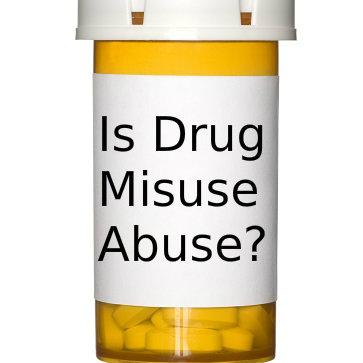 Prescription drug abuse is also sometimes known as the nonmedical use of prescription drugs. Technically, a person participates in this form of abuse whenever he or she knowingly takes his or her prescribed medication in a manner other than intended or knowingly takes a medication prescribed for someone else. However, some public health experts make a distinction between prescription drug abuse and prescription drug misuse. This distinction holds that abusers purposefully seek to obtain a nonmedical benefit from improper use of a medication, while misusers seek to obtain a medical benefit (such as pain relief) from improper medication use. In addition, public health officials typically distinguish between the abuse/misuse of medications that have no potential to trigger physical dependence and addiction, and the abuse/misuse of medications with an addictive potential.
Prescription drug abuse is also sometimes known as the nonmedical use of prescription drugs. Technically, a person participates in this form of abuse whenever he or she knowingly takes his or her prescribed medication in a manner other than intended or knowingly takes a medication prescribed for someone else. However, some public health experts make a distinction between prescription drug abuse and prescription drug misuse. This distinction holds that abusers purposefully seek to obtain a nonmedical benefit from improper use of a medication, while misusers seek to obtain a medical benefit (such as pain relief) from improper medication use. In addition, public health officials typically distinguish between the abuse/misuse of medications that have no potential to trigger physical dependence and addiction, and the abuse/misuse of medications with an addictive potential.
There are several reasons any given individual might start abusing/misusing a prescription medication. For example, some people mistakenly believe that since prescription medications come from doctors, they don’t pose a particular danger even when used in an unintended manner. Known risks of prescription medication abuse/misuse include the development of a diagnosable case of drug abuse or drug addiction (i.e., substance use disorder) and the onset of a nonfatal or fatal overdose.
Extent Of The Prescription Misuse Problem
The federal Substance Abuse and Mental Health Services Administration tracks year-to-year trends in prescription drug abuse through an annual project called the National Survey on Drug Use and Health. The most recent available figures from this survey, which cover part of 2011 and most of 2012, indicate that about 6.8 million American adults and teenagers abuse a mind-altering, potentially addictive medication in the average month. This number represents roughly 2.6 percent of the total adult and teen U.S. population. In descending order of popularity, the four classes of medications most commonly targeted for abuse are opioid painkillers, tranquilizers, stimulants and sedatives. Opioid painkiller abuse occurs far more often than any other form of prescription medication abuse.
How Many Understand The Definition Of Abuse?
In the study published in Substance Abuse, researchers from three branches of New York University (including the NYU School of Medicine and the NYU College of Nursing) used a small-scale assessment of 27 patients receiving treatment at a primary care clinic to estimate how many people understand the definition of prescription drug abuse (defined by the research team as nonmedical prescription drug use/prescription drug misuse). They began this assessment by asking each of the study participants to complete a brief questionnaire on the use/misuse of alcohol, tobacco, illegal/illicit drugs and prescription medications. In addition, the researchers used interviews to probe the answers each participant gave on his or her questionnaire. Six of the 27 patients had a recent history of prescription drug abuse/misuse, while another eight had a recent history of abusing an illegal/illicit substance.
The researchers found that all but one of the study participants understood what constitutes the use of an illegal or illicit drug. However, fully 41 percent of the participants inaccurately described what constitutes the abuse/misuse of prescription medications. The most frequently encountered inaccuracy was a failure to distinguish between medications with a potential for triggering problems with abuse and addiction, and medications that have no such potential. Interestingly, none of the study participants with a history of illegal/illicit drug use inaccurately understood the meaning of prescription drug abuse/misuse.
The authors of the study published in Substance Abuse concluded that many of the patients who discuss prescription drug abuse/misuse with their doctors may not understand the terms and definitions that doctors commonly employ. This tendency toward misunderstanding appears to be especially prominent in people who have no personal experience with illegal/illicit drug intake. Based on these findings, the study’s authors believe that primary care doctors who screen their patients for potential prescription drug abuse may inadvertently misidentify those patients as medication abusers in a significant number of cases. In line with this belief, they point toward a need to clarify the language used to explain prescription drug abuse/misuse to patients.
Read about The Effects Of Psychosis On Drug Misuse
21 Mar 2014
Is Your Loved One Abusing Pain Pills?
Prescription painkillers are serious drugs that are effective and help many people, but they are also risky. These medications are opioids, which means that they produce a euphoric feeling in the user, or a high, and they are addictive. If someone you love has been prescribed a narcotic painkiller, be aware of the dangers and the possibility of abuse. Know how to read the signs that he is abusing the pills and be prepared to intervene before it is too late.
What Are Opioid Painkillers?
Opioid painkillers are controlled substances used to treat severe and chronic pain. An opioid is any drug that is derived from the compounds found in the opium poppy. Heroin, the highly addictive street drug, is an opioid. Prescription opioid painkillers include oxycodone, hydrocodone, morphine and hydromorphone. They are sold under various brand names. These drugs block pain signals, but they also cause a pleasant feeling, and if abused, create changes in the brain that often lead to dependence.
What Are The Signs Of Opioid Abuse?
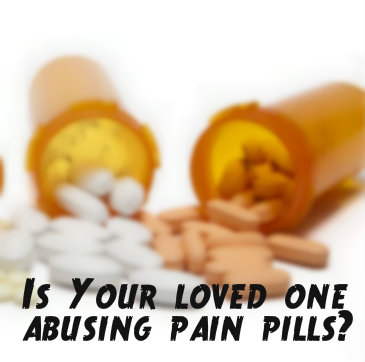 It is important to understand that there is a difference between abuse and addiction. Your loved one may be abusing painkillers if he is using them to get high or if he is taking more than he was directed by his doctor to take. Abuse is not addiction, but it can easily lead to that state. Being aware of the signs of abuse is important so that you can help him before he becomes addicted. If he is abusing his medications, chances are he will try to hide it from you. Here are some signs to watch for:
It is important to understand that there is a difference between abuse and addiction. Your loved one may be abusing painkillers if he is using them to get high or if he is taking more than he was directed by his doctor to take. Abuse is not addiction, but it can easily lead to that state. Being aware of the signs of abuse is important so that you can help him before he becomes addicted. If he is abusing his medications, chances are he will try to hide it from you. Here are some signs to watch for:
- Look for signs that your loved one is high on opioids. If he is taking them as directed he may experience a little bit of a high, but if he is abusing his pills the symptoms will be greater. Someone who is high on opioids will become drowsy and have slowed breathing and movements. He may also become anxious, have mood swings or become apathetic or depressed.
- Opioid abuse causes a lack of energy. If your loved one seems tired all the time, especially throughout the day, and skips out on activities he normally enjoys, he may be abusing his medications.
- Opioids also cause people to lose focus. Look for signs that your loved one’s attention span is changing. Maybe he can’t focus on his favorite television show. Maybe he is having problems at work because he loses focus and drifts.
- Look for physical signs. Opioids cause certain physical changes that you can watch for. Look for a lot of itching, flushing in the neck or face, extremely constricted pupils, a runny nose, a lot of yawning, nausea and vomiting and flu-like achiness.
- Watch for secretive behaviors. If your loved one is abusing his medications, he likely knows he is doing something wrong, and he will probably try to hide the behavior from you. Be aware of any behaviors that seem unusual or that indicate he may be hiding something from you.
- Be aware of mood swings or personality changes. Any kind of drug abuse can cause behavioral and personality changes. If he is acting strangely and you have no other explanation for his mood swings, drug abuse may be the culprit.
If your loved one has been prescribed opioids for pain, there is no reason to assume he will begin abusing them. However, many people have fallen into that trap without meaning to do so. Be aware of the signs of abuse and pay attention. You could be saving his life by intervening.
Read About Teens Abusing Painkillers
Seniors make up 13 percent of the population of the United States, yet they account for more than one-third of the prescription medications. One-half of all seniors were taking at least three prescription medications as of the year 2000, up from one-third in 1988.
With so many seniors taking prescription drugs, it shouldn’t be surprising that they are a part of the rising problem of prescription drug abuse. Nevertheless, senior drug abuse remains a largely hidden problem, in large part because elderly people do not fit the common profile of someone dealing with drug abuse or addiction.
In the coming decades, this problem can only be expected to grow. Seniors are one of the fastest growing segments of the population, as the first wave of the baby boom generation has reached senior citizen status. By 2030, seniors are expected to make up one-third of the country’s population.
What Are The Hidden Symptoms Of Senior Addiction?
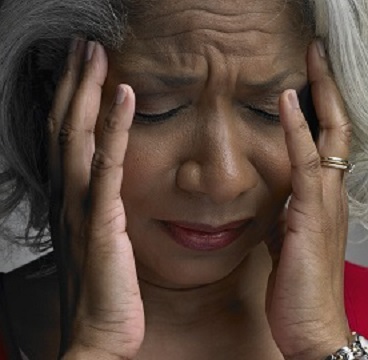 Identifying the signs and symptoms of drug problems in seniors presents various challenges. One of the biggest difficulties is the fact that a number of these signs and symptoms can mirror normal signs of aging.
Identifying the signs and symptoms of drug problems in seniors presents various challenges. One of the biggest difficulties is the fact that a number of these signs and symptoms can mirror normal signs of aging.
Among the symptoms of drug use that may be mistaken for signs of aging are disorientation, poor balance, memory loss, chronic boredom, depression, shaky hands, poor balance and mood swings. Since seniors do not fit the stereotypical profile of someone with drug problems, recognizing when such symptoms spring from drug use and not just aging is a challenge for loved ones and health professionals alike.
Drug Abuse Vs. Misuse – Is There A Difference?
When examining drug problems among seniors, it is helpful to make the distinction between drug abuse and drug misuse. Drug misuse refers to the use of prescription medications in a way that does not comply with the prescription instructions. Drug misuse can be entirely unintentional, and the result of unclear instructions or confusion. Drug misuse can also be intentional; for example, patients may take more than the prescribed dose without consulting their doctor if they feel that the prescribed dose is not having an effect. In general, the term misuse is used to refer to the incorrect use of legitimately prescribed drugs, with the intent of treating an established medical problem.
In contrast, drug abuse refers to people who use drugs for recreational purposes. They may abuse illegal drugs that have no therapeutic purpose, or they may use therapeutic drugs incorrectly in order to achieve a euphoric high or some other pleasurable feeling.
Both drug misuse and drug abuse can result in drug dependence and other negative side effects. However, drug misuse is usually the easier problem to solve. The most common reason for drug misuse is an ineffective treatment plan, and the problem will usually disappear if treatment is revisited and a more effective plan put in place.
Drug abuse among seniors is much less common than drug misuse. Nevertheless, the problem does exist for 12 to 15 percent of elderly people who seek medical help.
What Are The Commonly Abused Drugs Among The Elderly
Opioid drugs, depressants, stimulants, benzodiazepines and over-the-counter (OTC) medications are the drugs most frequently abused among seniors. Opioids are typically prescribed for pain relief; depressants are prescribed for anxiety and sleep disorders; stimulants are prescribed for narcolepsy and ADHD; and benzodiazepines for anxiety and insomnia.
Opioids are particularly dangerous drugs to abuse or misuse because they are extremely addictive. These medications are chemically similar to the illegal drug heroin, and can be just as addictive as heroin when used incorrectly.
After prescription drugs, alcohol is the most commonly abused substance among the older adult population. OTC medications can react poorly with alcohol, leading to negative consequences that would not otherwise be present with these medications. They can also react badly with prescription drugs.
Find Out The Strategies To Address Senior Drug Problems
Tailoring education, consumer information and screening efforts to older adults are some key steps to reducing drug abuse among the elderly.
Although seniors are the most significant consumers of prescription drugs, promotional and educational materials are often not geared toward them. Helpful tools might include educational materials available in large print and drug diaries to help track medications.
Educational efforts aimed at reducing drug abuse should also keep seniors in mind. Teenagers aren’t the only segment of the population that needs education about drug and alcohol abuse. The more society recognizes that seniors are an at-risk population, the more education and screening efforts may be available in retirement communities, senior centers, city parks and recreation departments, and other places where the elderly can benefit.
Read More About Why Drug Use Is Surging In Baby Boomers
Prescription painkiller abuse has grown large enough to gain the attention of pharmaceutical companies, doctors, addiction experts, and even the federal government. There are things which can be done to try and halt the abuse of prescription medications. However, those in the know say that when access to opioids is shut down, we can expect substance abusers to move on to heroin.
Made from a synthetic form of opium, opioids are heavy-duty pain relievers like Oxycodone (Percocet), Hydrocodone (Vicodin), OxyContin (a longer-lasting form of Oxycodone) and codeine. Hydrocodone and Oxycodone are usually mixed with aspirin or acetaminophen to produce longer-lasting pain relief.
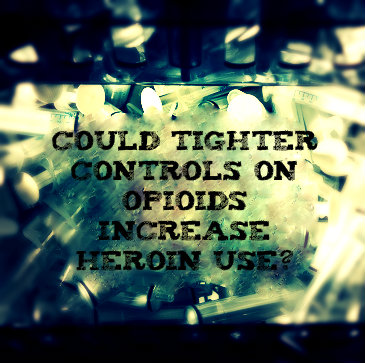 Opioids – Number One Prescribed Medication – Problem In The U.S.
Opioids – Number One Prescribed Medication – Problem In The U.S.
Opioids are the number one prescribed medication in the nation and are responsible for the vast majority of drug-related injuries and fatal overdoses, partly because people view them as safer than street drugs. Their wide availability means more drugs are in the hands of abusers.
Most opioid addicts started with a doctor’s prescription for a legitimate need. People who take more pills for a longer period than was prescribed can easily become addicted. Young people who use them recreationally can also quickly form a habit.
Thomas McClellan, the former Deputy Director for the White House Office of National Drug Control Policy, says if we can address these three issues the problem could be controlled:
3 Opioid Issues
- Over-Prescribing – Doctors want to control pain because it promotes healing and fosters a strong doctor-patient bond. Banning opioids outright will not work, but perhaps changing the standards of care which guide prescribing could.
- Insufficient Monitoring – Efforts are underway in most states to establish state-level monitoring programs. Under these programs every doctor who prescribes, patient who picks up and pharmacy that fills a controlled drug prescription will go on record. This should help reduce over-prescribing by doctors and keep patients from going from doctor to doctor in search of prescriptions.
- Patient Misuse – The Federal Drug Administration would like to see Hydrocodone reclassified to Schedule II so that it would have more oversight and be less accessible to patients. Under Schedule II constraints such as limiting automatic refills could help to reign in misuse.
How Tightly Controlling Opioids Could Increase Heroin Use
Would these measures stop painkiller abuse? Perhaps. But even if we succeed, experts predict that drug use will simply shift to another opiate: heroin.
Opioids are synthetic opiates (forms of opium) while heroin is a non-synthetic form. In other words, the drugs are somewhat related and produce similar results. Heroin costs about one half as much as synthetic opioids. So if opioids become more expensive and harder to get, experts predict that users will just switch to heroin.
Communities need to be ready for the shift that will most likely happen as a result of opioid crackdowns. The next question will be how to handle the heroin crisis.
If you or a love one needs help finding a drug rehab facility contact an Elements Recovery Advisor now! 855-763-6488
“Mother’s little helper” has been around for decades. In 1966, The Rolling Stones released a hit song about the abuse of drugs, like Valium, by mothers looking to take the edge off a busy day. Now, some moms are using different substances to get through the day: prescription stimulants. Although they can provide a boost of much-desired energy, many women develop a drug addiction to these commonly prescribed “legitimate” medications.
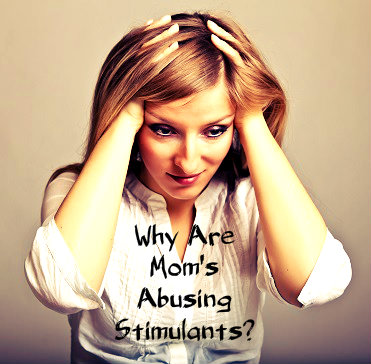 Prescription stimulants are normally used to treat a range of medical conditions, including attention-deficit hyperactivity disorder (ADHD), narcolepsy, and depression. Common stimulant medications include Dexedrine (dextroamphetamine), Adderall (amphetamine and dextroamphetamine), Ritalin (methylphenidate), and Concerta (methylphenidate).
Prescription stimulants are normally used to treat a range of medical conditions, including attention-deficit hyperactivity disorder (ADHD), narcolepsy, and depression. Common stimulant medications include Dexedrine (dextroamphetamine), Adderall (amphetamine and dextroamphetamine), Ritalin (methylphenidate), and Concerta (methylphenidate).
Legitimate Stimulant Use
Chemically, these drugs are similar to natural neurotransmitters within the brain, including norepinephrine and dopamine. When taken to treat a genuine medical condition, a physician will prescribe the medication at a low level and gradually increase it until the drug produces the desired effects. In addition, the stimulant typically comes in a capsule or tablet form that allows for the slow release of the medication into the body. This slow, steady rise in dopamine mimics the body’s natural production. When used as directed by a physician, ADHD medications and other prescription stimulants are not addictive and produce no high.
Stimulant Abuse And Emergency Room Visits
The effect is different when stimulants are abused, however. Instead of capsules or tablets generating a slow, steady rise of dopamine over time, the pills are crushed before being snorted or they are dissolved in water and then injected. This causes a dopamine rise so rapid that it disrupts the brain and produces feelings of euphoria.
Evidence suggests that drug addiction to stimulants is on the rise. For example, emergency room visits involving stimulant abuse skyrocketed between 2005 and 2010. Visits more than tripled for people over age 26 [1].
Why Mom’s Are Abusing Stimulants
The demands placed on mothers in this culture can feel overwhelming. From single moms to homeschooling moms to moms who work outside the home, many feel the pressure of being the master multitasker. Some mothers turn to stimulants in the belief they will help them focus better on their responsibilities or help them make it through a hectic day. It’s important to note that while these prescriptions can increase concentration in those with a medical need for them, there is no clinical evidence that abusing these drugs sharpens focus.
Women also frequently use stimulants to lose weight. For example, Adderall can speed up metabolism and lower appetite, resulting in weight loss. However, it’s not a healthy or permanent weight loss solution. When a woman stops taking the drug, she typically gains the weight back – and sometimes even more.
Dangers Of Stimulant Abuse
Abusing any drug can have a serious impact on a mother’s emotional and physical well-being; however, stimulant abuse is particularly dangerous. When abused, these medications can trigger irregular heartbeat, heart failure, seizures, and dangerously high body temperatures. As mentioned earlier, stimulants also cause decreased appetite, which, in serious cases, can cause malnutrition. In addition, women addicted to high doses often experience episodes of paranoia or hostility. Instead of helping a mother meet the demands of a busy lifestyle, stimulants make it harder to handle normal responsibilities, including caring for children.
There is also added danger in the method some addicts use to get high. When the drug is dissolved in water, some insoluble fillers in the pill may not break down completely. While these solid pieces are small enough to be injected, they are also large enough to block small blood vessels, creating the risk for serious health complications.
Stimulants are also dangerous because they don’t mix well with other substances. The ER study mentioned above showed that 63% of visits involving stimulants included the use of alcohol, painkillers, sleep aids, or anti-anxiety medications [1]. The use of other drugs adds an additional layer of risk to stimulant drug addiction.
Stimulant Drug Addiction Treatment
If you’re addicted to or abusing stimulant prescription drugs, you need drug rehab treatment. Addicts experience psychological withdrawal from chronic stimulant abuse, so the first step will likely be a medically-monitored detox to wean your body from the drugs.
After detoxification, therapy begins. There are several therapies used to treat this addiction, and your rehab team will recommend one or more based on your situation. Cognitive-behavioral therapy (CBT) is often used to examine the negative thoughts, beliefs, behaviors, and emotions that contribute to addiction. Once you better understand how those contribute to your drug addiction, you’ll learn how to positively change those thinking patterns in order to cope in a healthier way. Although considered a short-term type of therapy, CBT involves a gradual process that takes time and effort in order to be effective.
Contingency management is another treatment that may be used for abuse of Adderall and other prescription stimulants. Sometimes called voucher-based reinforcement (VBR), the program provides tangible rewards for positive behaviors and staying drug free. For example, an addict who stays clean for a specified period of time, as verified through urine samples, may earn a voucher for food, movie tickets, or other goods and services that promote drug-free behavior. The value of the voucher starts low and increases the longer the addict stays clean.
Studies of contingency management show that it can reduce stimulant abuse when used as part of a comprehensive treatment strategy [2]. Additionally, one study suggests that, on its own, contingency management may be more effective at treating stimulant use than CBT alone [3].
Treatment for stimulant drug addiction will also likely include support groups. Often based on the 12-step program first developed by Alcoholics Anonymous (AA), self-help groups provide guidance and assistance to recovering addicts. You’ll be able to connect with others going through the same struggles, which may help reduce feelings of hopelessness or isolation. Meetings are free, and you can attend them for as long as needed to help you stay abstinent.
Drug addiction in mothers can lead to serious consequences for herself and her children. Contact a drug rehab treatment facility about getting help for stimulant abuse or addiction. With treatment, it’s possible to stop abusing drugs and start learning healthier ways to live life, no matter how hectic your life may be.
References:
[1] http://www.samhsa.gov/newsroom/advisories/1301241230.aspx
[2] http://www.ncbi.nlm.nih.gov/pubmed/23138961
[3] http://www.ncbi.nlm.nih.gov/pubmed/16445555
A recent report from Olympia, WA, calls for a citywide conversation regarding the growing problem of heroin abuse plaguing the area—particularly drawing attention to the widespread issue of dirty needles. Heroin abuse is damaging in a host of more obvious ways—addiction, destroyed relationships, torched careers and the direct physical consequences—but one of the biggest issues comes from the use of unclean needles. This conversation isn’t a comfortable one for many citizens, but it’s a problem that will not go away, particularly with the epidemic-level prescription drug abuse gripping the nation.
Prescription Drugs: A Gateway To Heroin?
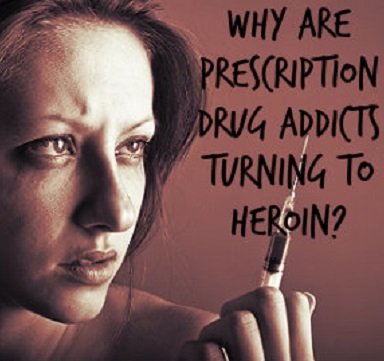 The prescription drug addiction crisis that America is facing has already been shown to have led users into heroin abuse. Understanding why requires some basic knowledge of the chemical similarity between the substances. The most effective painkillers are opioid drugs like oxycodone and hydrocodone (the active ingredients in OxyContin and Vicodin, respectively), substances derived from the opium poppy. This plant is the ultimate source of heroin, and the drugs are therefore effectively the same. Exceeding your doctor’s prescribed dosage heightens the narcotic effect of the substance, making it roughly comparable to taking a dose of heroin. This is why 12 million Americans used prescription painkillers non-medically in 2010 and why so many people become addicted and many of them overdose—but the supply isn’t always easy to come by.
The prescription drug addiction crisis that America is facing has already been shown to have led users into heroin abuse. Understanding why requires some basic knowledge of the chemical similarity between the substances. The most effective painkillers are opioid drugs like oxycodone and hydrocodone (the active ingredients in OxyContin and Vicodin, respectively), substances derived from the opium poppy. This plant is the ultimate source of heroin, and the drugs are therefore effectively the same. Exceeding your doctor’s prescribed dosage heightens the narcotic effect of the substance, making it roughly comparable to taking a dose of heroin. This is why 12 million Americans used prescription painkillers non-medically in 2010 and why so many people become addicted and many of them overdose—but the supply isn’t always easy to come by.
One of the unexpected downsides of cracking down on prescription drug abuse is that many people are left addicted to opiates but without the pills to satisfy their cravings. This problem is “solved” by many of the users by buying heroin — it’s easier to get and is cheaper than the medically legal versions prescribed by doctors.
Hidden Drug Problem
Olympia, WA, is experiencing an increase in heroin use. Previously, the heroin problem was primarily confined to grim alleyways in the inner city, but now—thanks in part to narcotic prescription medicines—it’s expanded into the suburbs, spreading across the city like a disease. While the obvious issues are the crimes associated with heroin abuse and the physical harm to the user, another immediate problem tied to increased heroin use is that of dirty needles littering the streets. The local paper, the “Olympian,” is calling for an open and frank discussion on the problem within the community.
Dirty Needles And Blood-Borne Viruses
Research from 2004 shows that one-fifth of HIV infections and the majority of hepatitis C infections were related to intravenous drug use, and one-quarter of America’s injecting drug users have HIV or AIDS. The reason is simple: with intravenous drug use, any case where two users share a needle represents a potential infection; the blood invariably remaining on the needle being plunged directly into the vein of the next user. In short, all needle-sharing is equivalent to unprotected sex. This is why needle-sharing is particularly ill-advised, but thinking realistically (particularly when accounting for the priorities of someone dependent on opiates) it’s clear that many users will take the risk to get their fix.
Needle Exchange Programs: Encouraging Addiction Or A Vital Service?
The problem with needle sharing is why needle exchange programs were created. The premise is simple: offer intravenous drug users a safe place to dispose of their used needles and offer them clean injecting equipment to reduce the risk of infections in the future. Olympia provides such a service and has for nearly 20 years. In 2012, about 950,000 dirty needles were collected and marginally fewer clean ones were distributed. The fact that the number of collections exceeds the number of distributions is a source of concern (the widespread discarded needles in locations like parks risk infecting children or non-using adults), but overall, the program undoubtedly reduces the numbers of blood-borne viruses.
However, critics argue that it isn’t right to distribute equipment to drug users who clearly have a problem, and that the programs merely allow them to continue on in addiction. This is an understandable criticism, but public health officials and those who operate the programs counter that the benefits of the programs outweigh the potential moral issues. Reducing the spread of HIV and hepatitis is a huge benefit, and it’s clear that the users aren’t only continuing to take heroin because they’ve been given free clean equipment; they are struggling with addiction and would continue using either way.
Harm Reduction As A Last Resort
It’s unreasonable to assume that every heroin user—or indeed every prescription drug user—will be able to quit effectively. Human history has repeatedly shown that not to be the case. This is why, in the most extreme cases, it’s better to focus on reducing harm as much as possible. The individual might be struggling to battle his demons and get clean, but does that mean we should stand by and do nothing while he risks HIV infection? It might make us feel like we live in a more harmonious world to pretend that these problems don’t exist, but it doesn’t improve the situation. If you turn a blind eye to the unnecessary suffering, you’d be fooling yourself to think it stopped happening.
See How Prescription Drug Abuse Is A Growing Problem On College Campuses – Click Here


